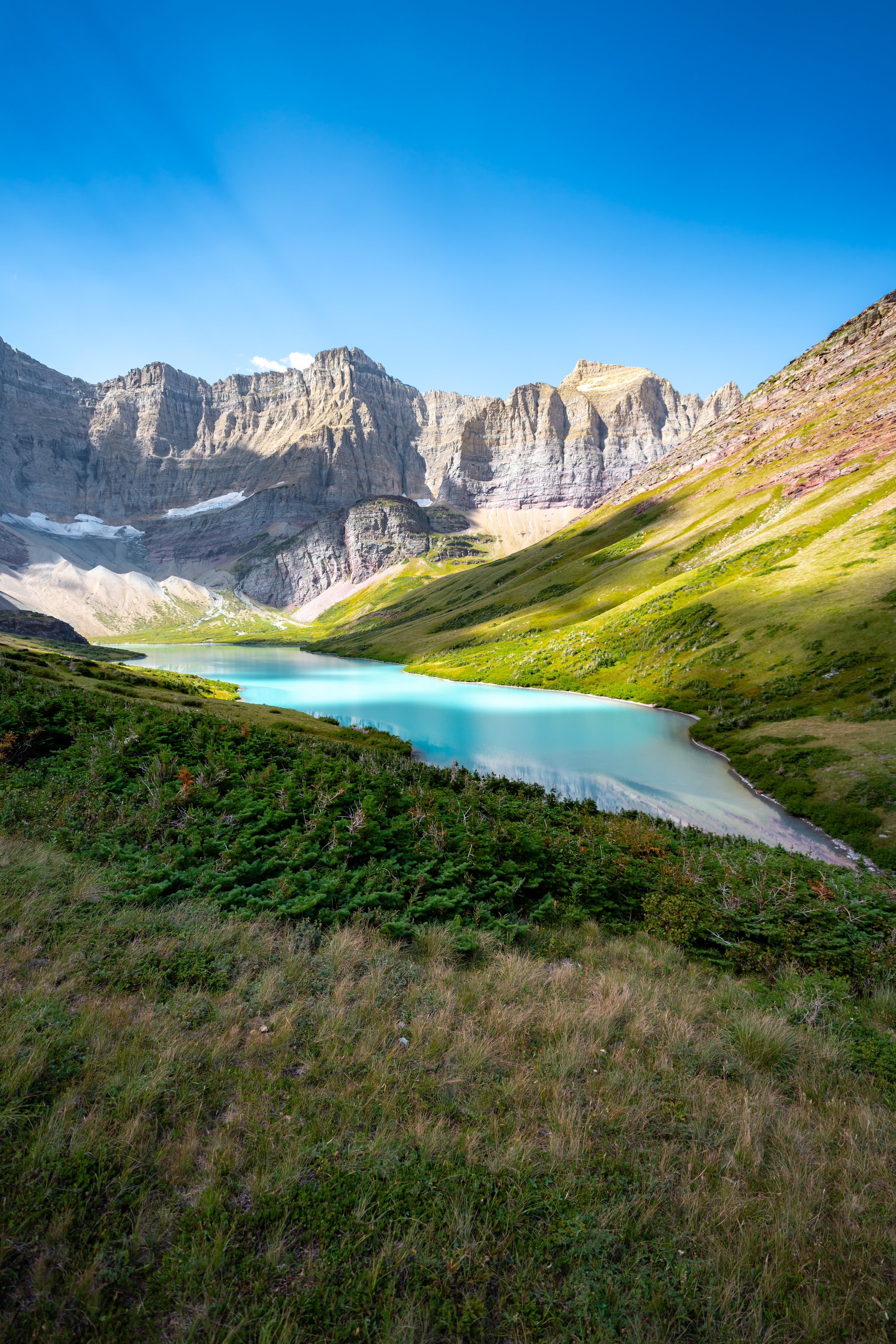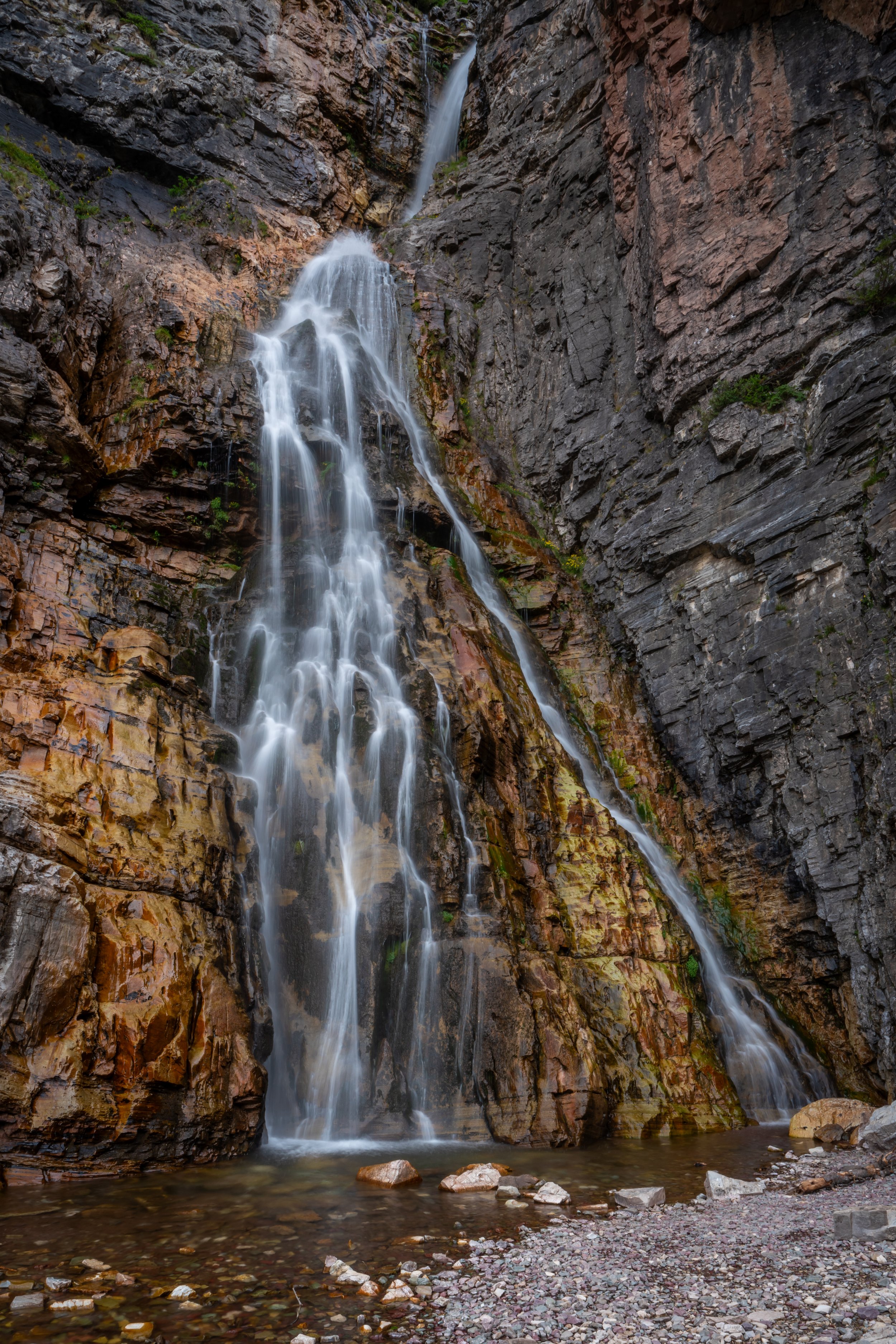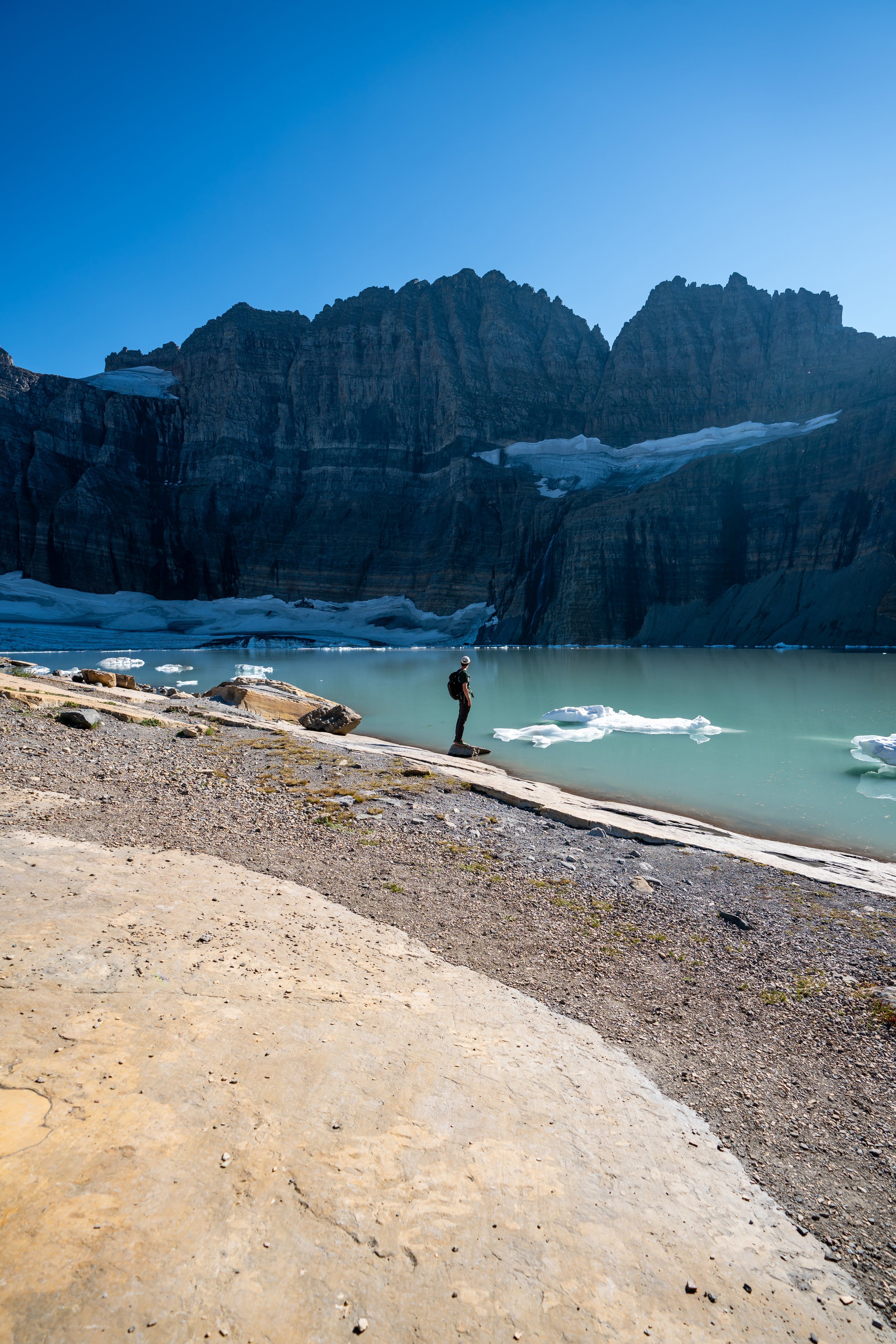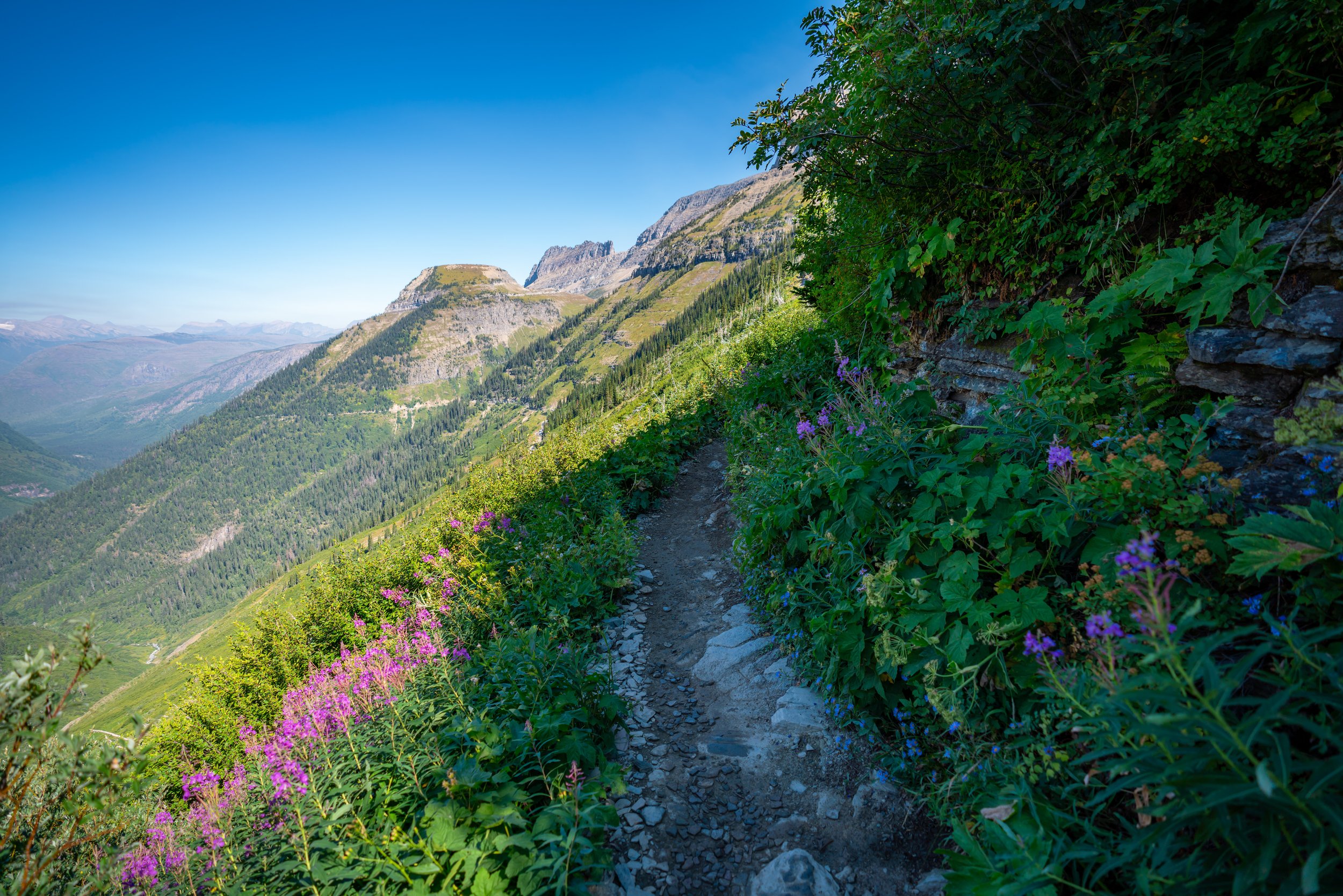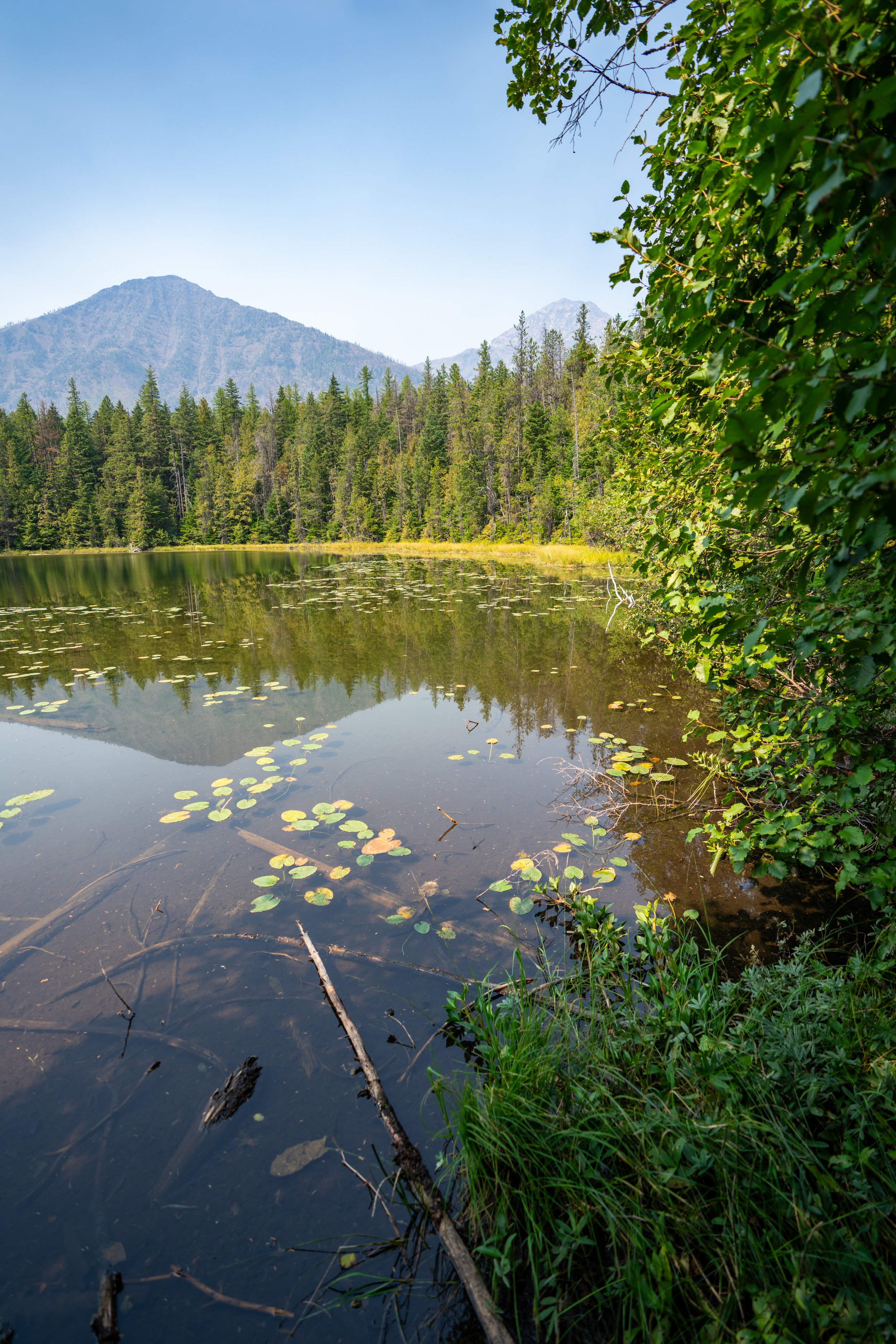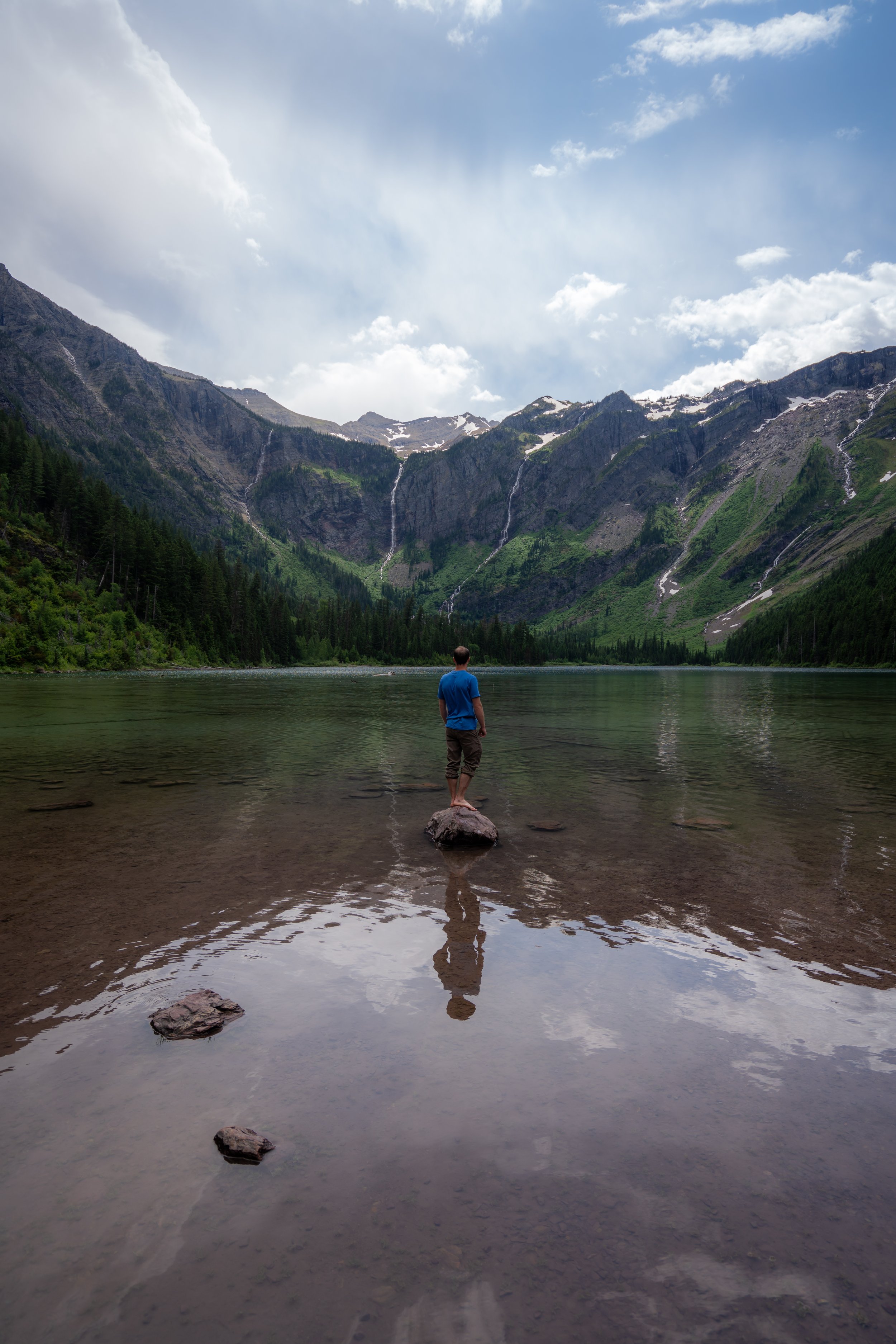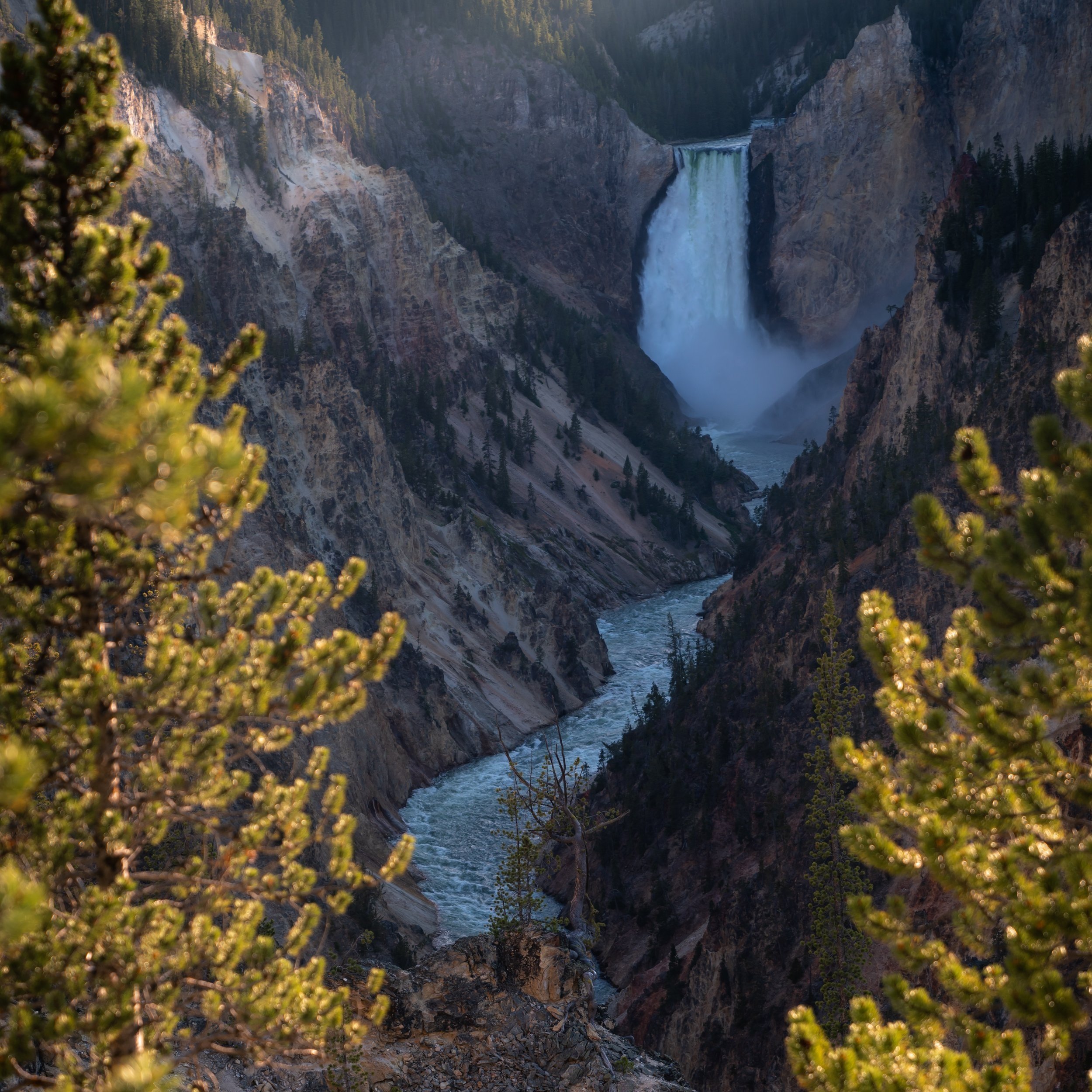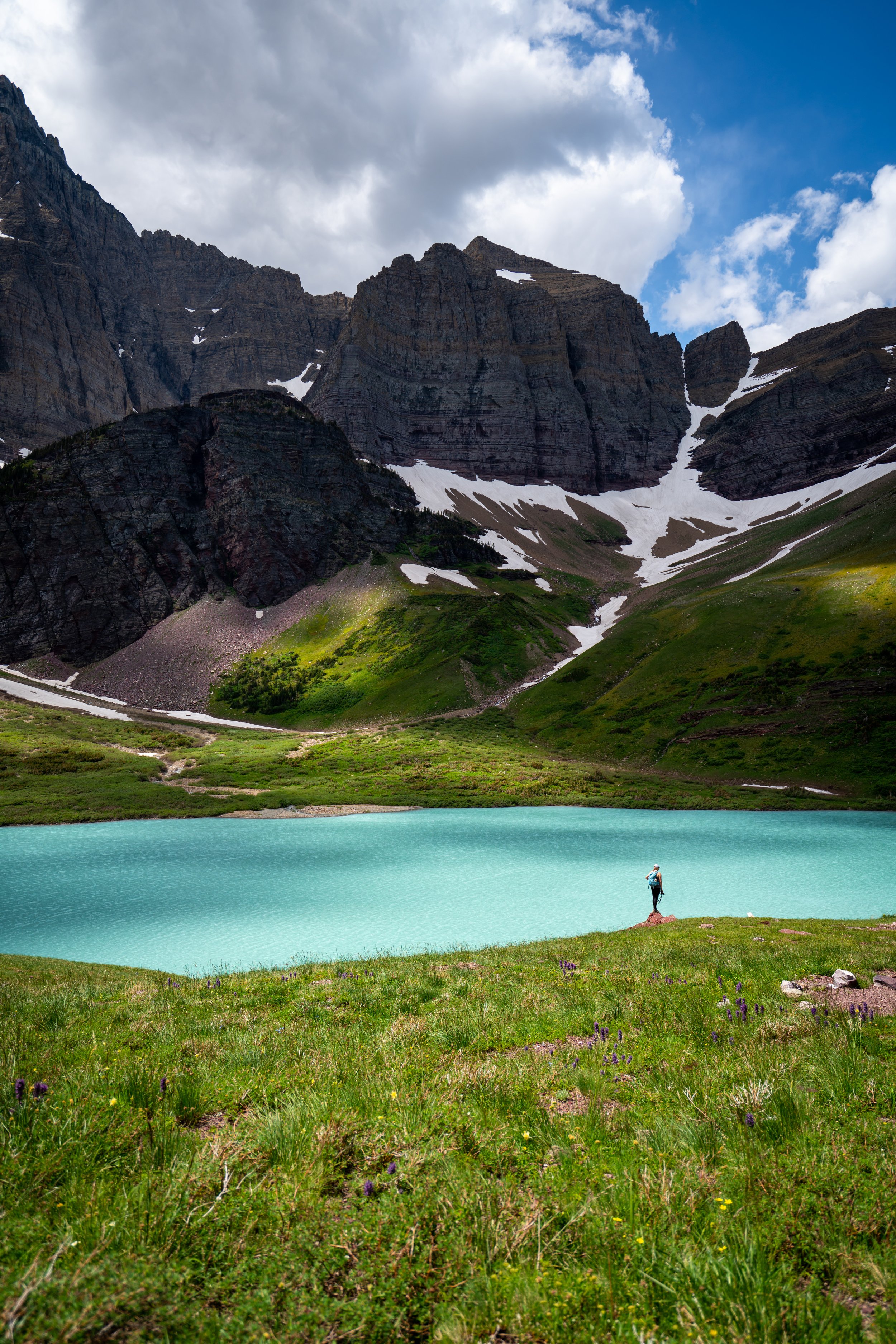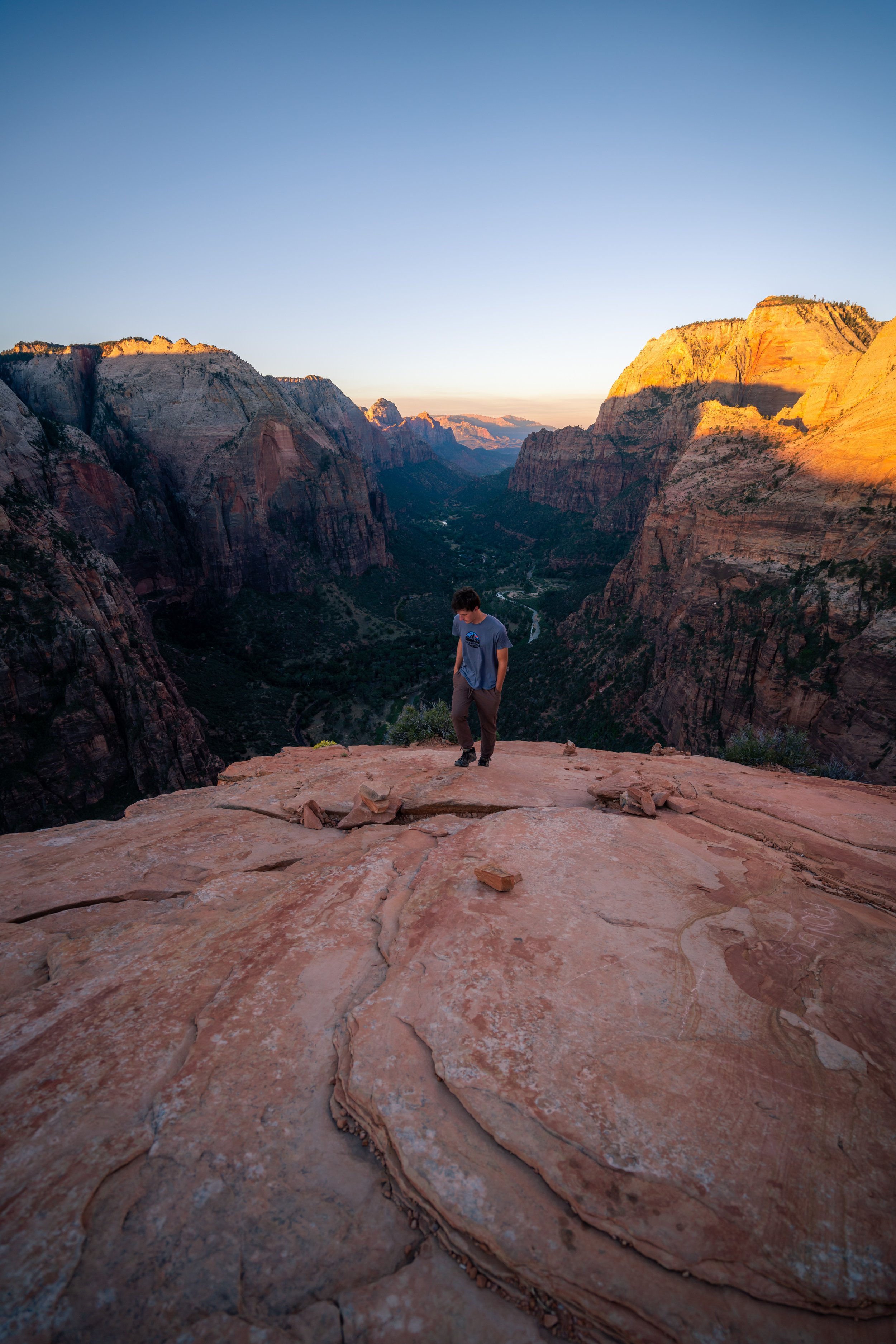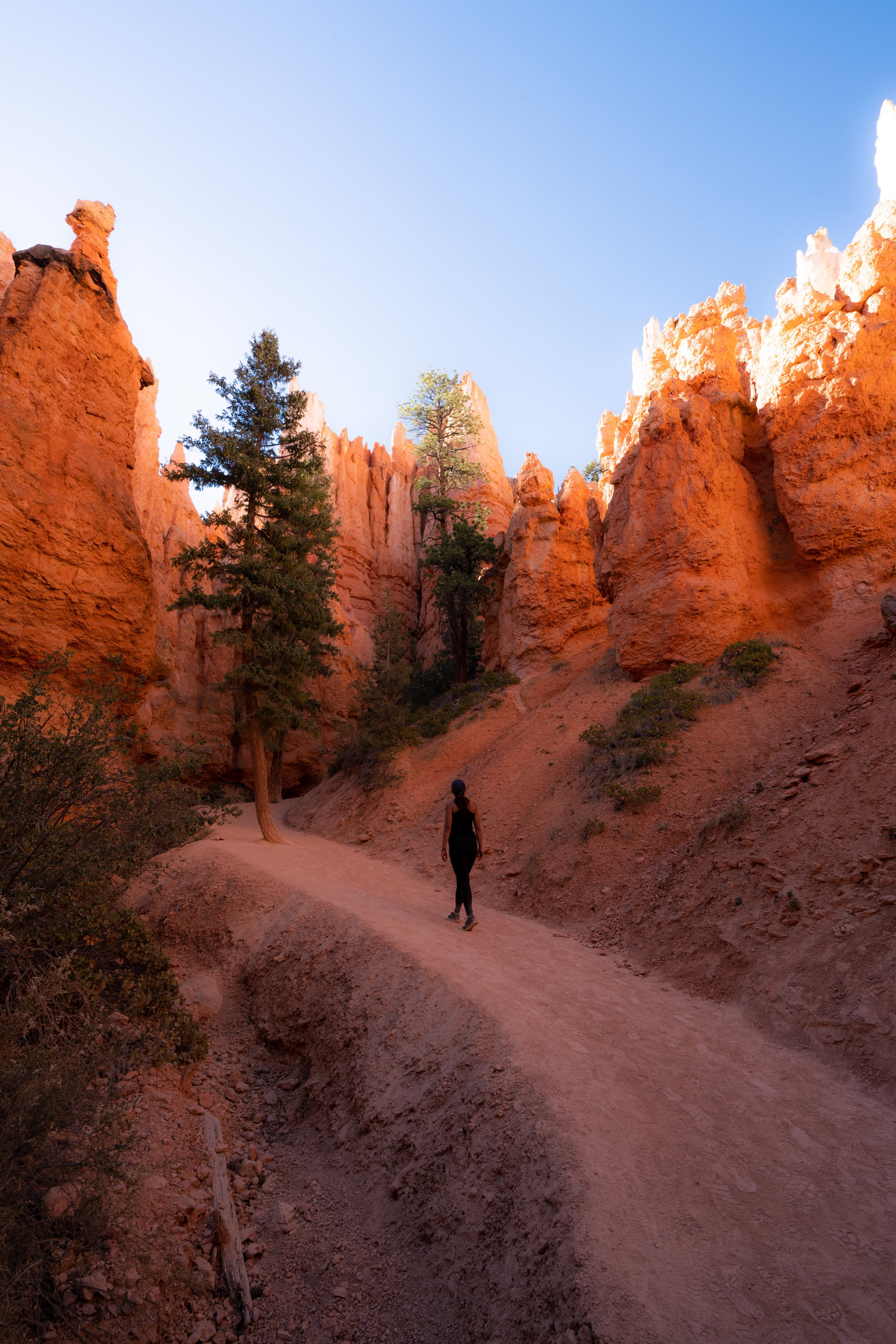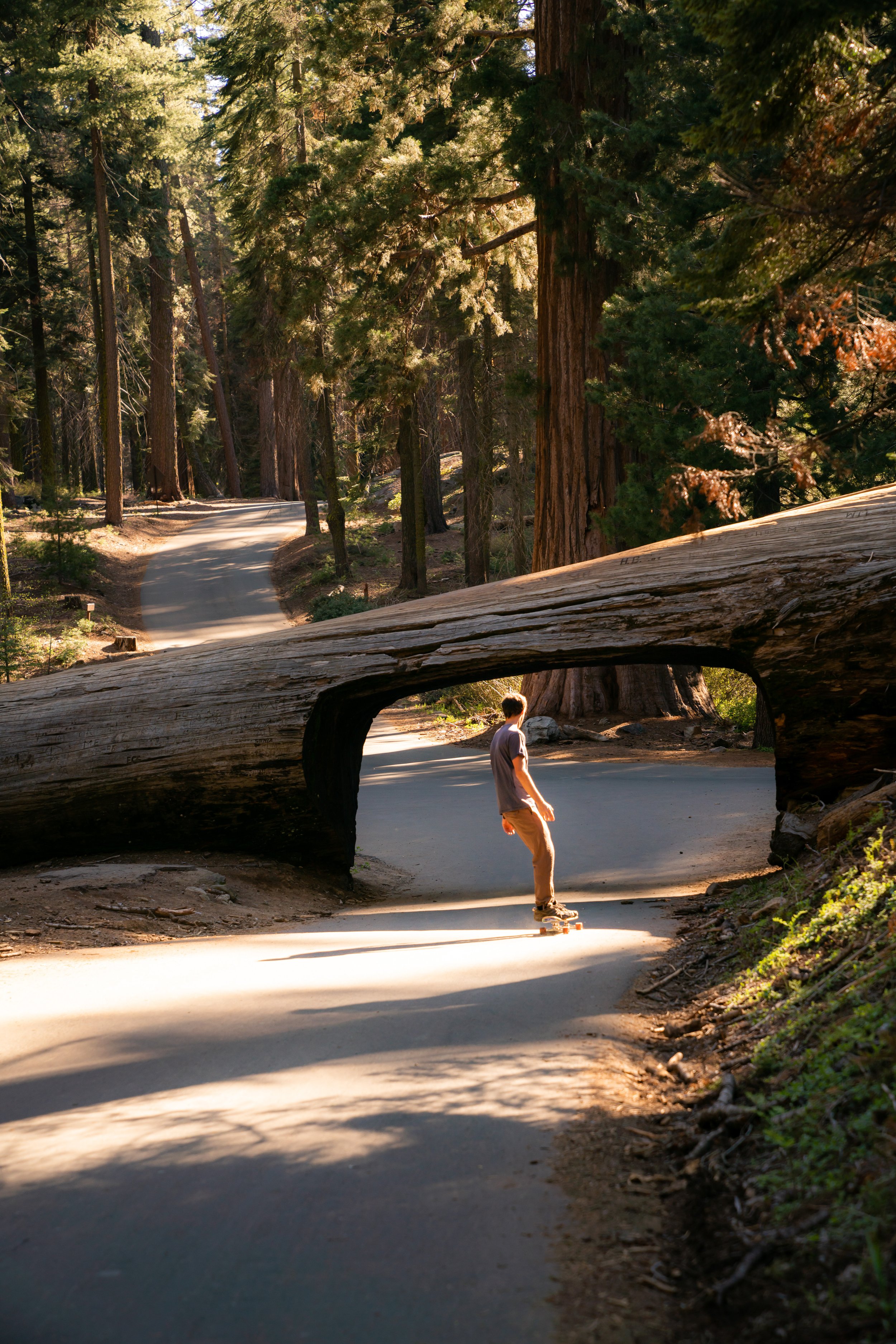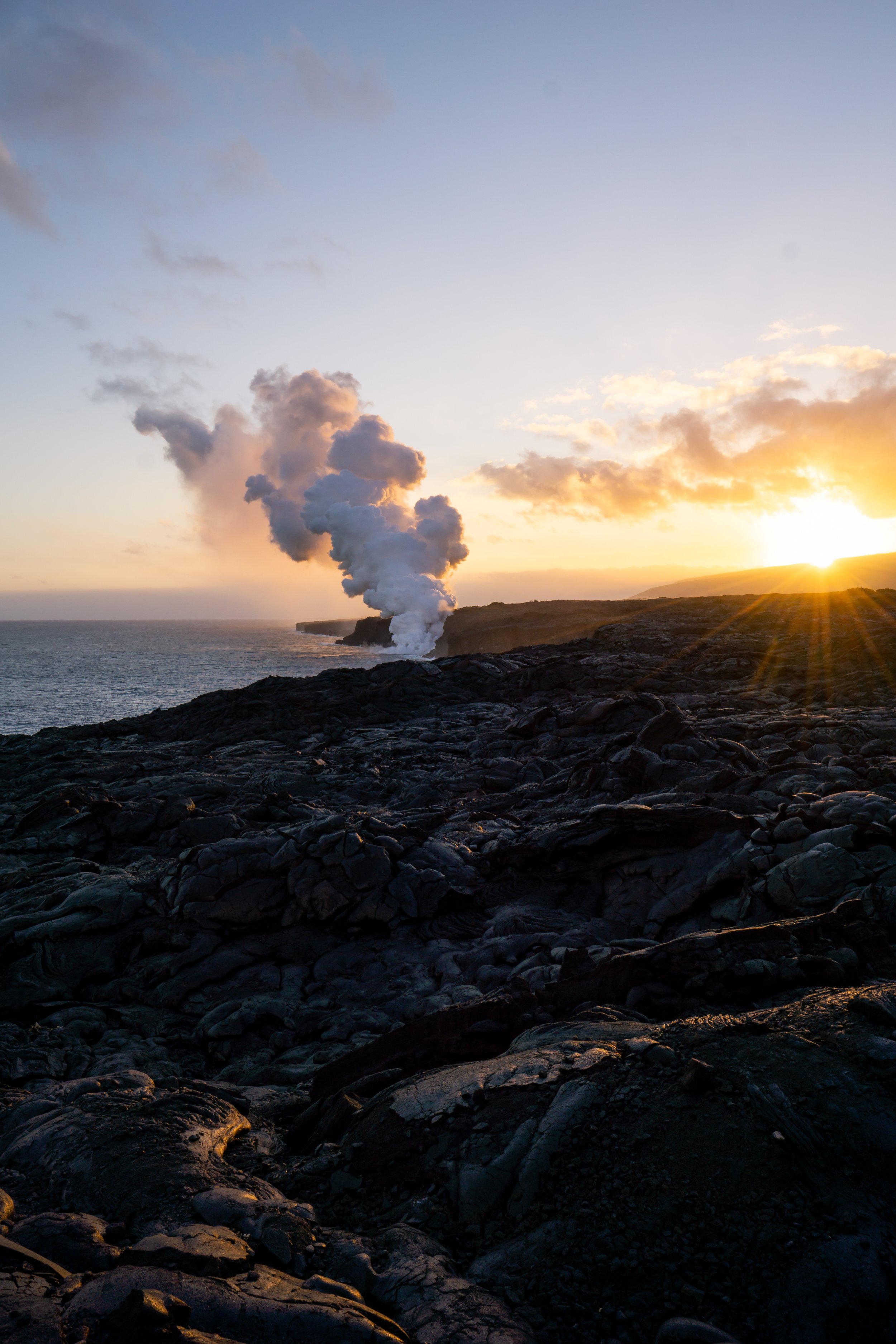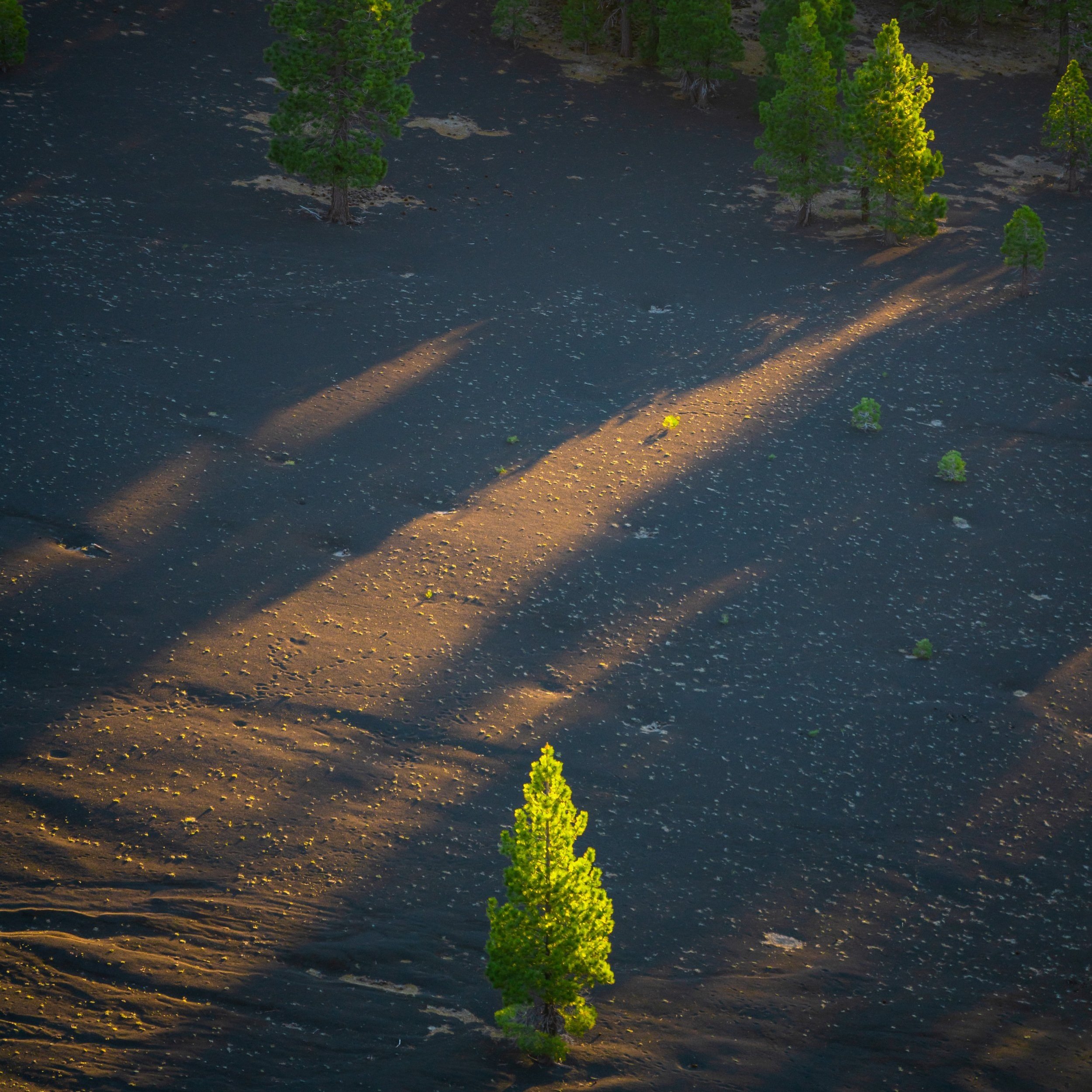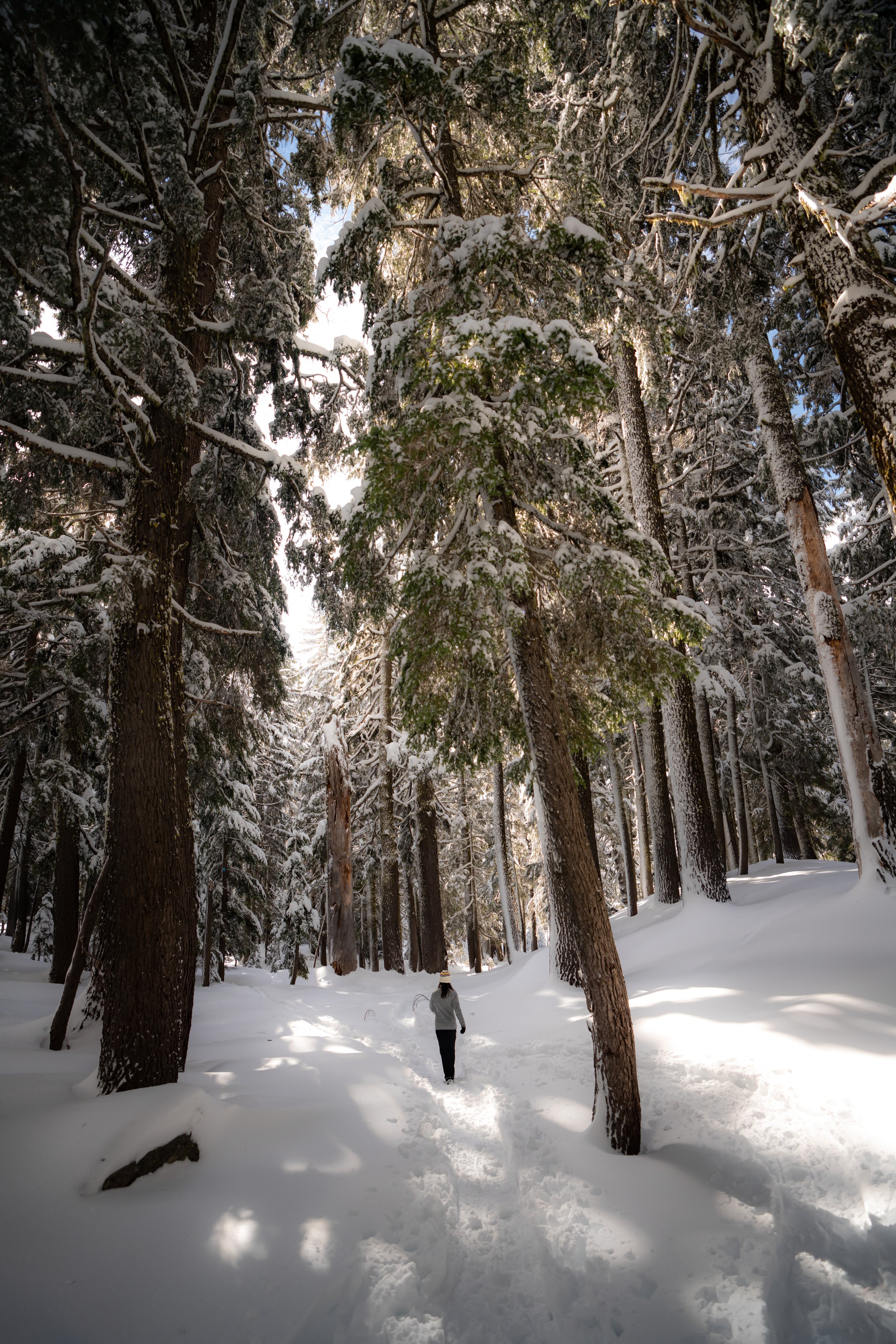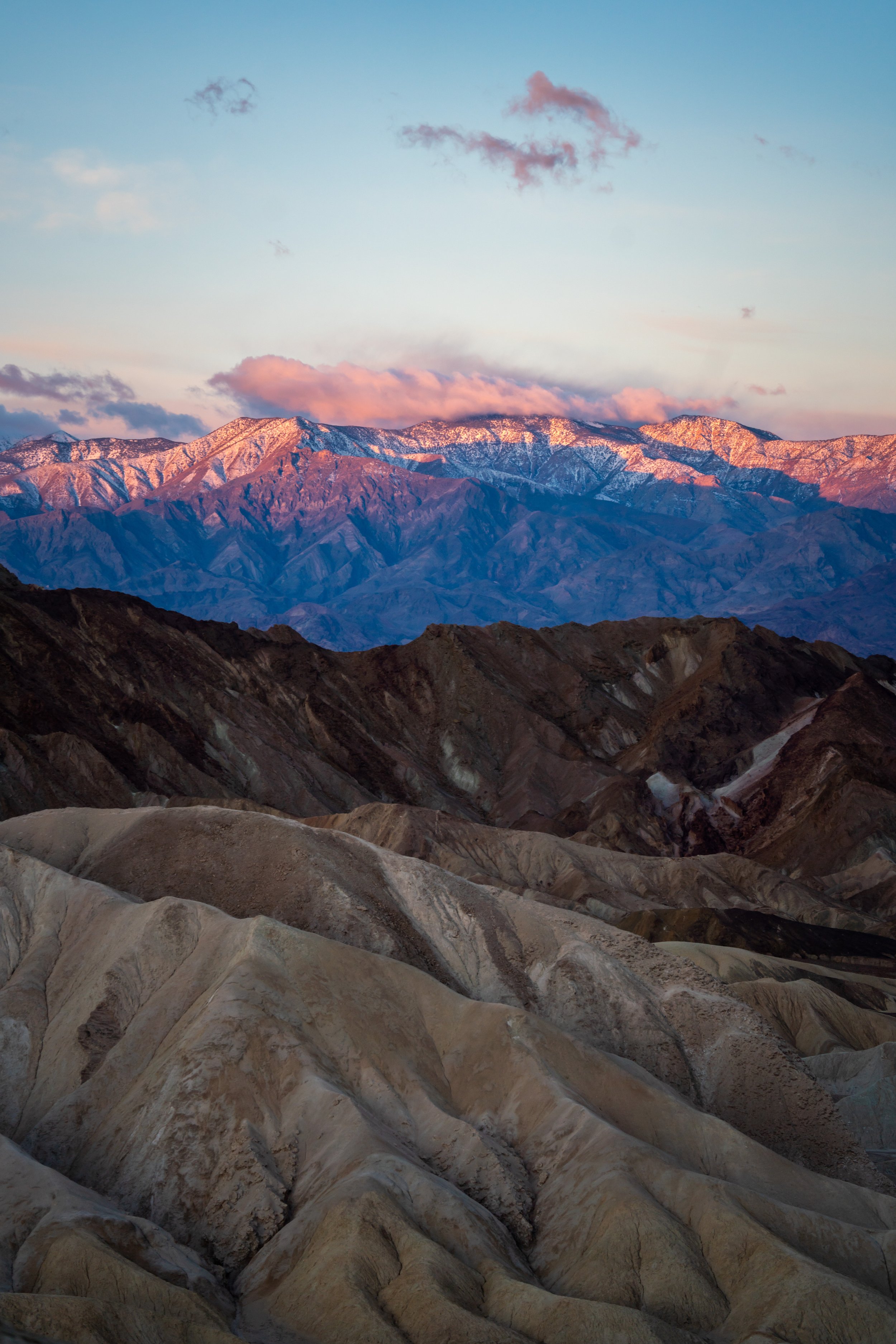Hiking the Hidden Lake Trail in Glacier National Park
Distance: 5.1 miles / 8.2 km
Elevation Change (Overlook to Lake): ~800 ft. / 244 m
The Hidden Lake Trail in Glacier National Park is one of the best day hikes across the entire park, as the trail is one of the shortest alpine lake adventures that’s great for both swimming and fishing!
That being said, the Hidden Lake Trail can be as easy as hiking the short 2.6-mile (4.2 km) out-and-back boardwalk to the Hidden Lake Overlook or as challenging as hiking all the way to the lake, about 5.1 miles (8.2 km) roundtrip.
In either case, Hidden Lake and Bearhat Mountain are two of the most beautiful, iconic, and picturesque places in all of Glacier National Park, making the Hidden Lake Trail one of my personal favorite Glacier adventures!
Logan Pass (Hidden Lake) Parking
Logan Pass is the most difficult area of Glacier National Park to find parking.
On every nice day during the busy summer season, you can expect the Logan Pass Visitor Center parking lot to fill with cars completely by 7:05-7:10 a.m. I’ve watched it happen more than once.
This means that by 7:20 a.m. cars are already circling the parking lot trying to find a spot, which won’t open up until the first hikers return from the Hidden Lake Overlook.
This also means that if you want to hike either the Hidden Lake or Highline Trail from Logan Pass, you need to arrive by 6:30 a.m. or earlier to be safe, which means factoring in the long drive up Going-to-the-Sun Road from the west entrance. The east entrance to Logan Pass is a bit of a shorter drive.
Overall, having a Glacier vehicle reservation does not mean much if you’re plan is to hike from Logan Pass because of how popular/ competitive it is to find parking.
Google Maps Directions: Logan Pass
Hiking Checklist - Glacier
Here is a complete list of must-have things that you will want for any hike in Glacier National Park.
Bear Spray & Holster - If you aren’t flying, don’t rent bear spray! It’s a waste of money. Prepare ahead of time by buying your own, as this may be one of the most important items on this list.
Osprey 3L Water Bladder - The Osprey 3L water bladder is the most universal hiking and backpacking water bladder on the market, and it’s my go-to because of the slide-off seal that allows it to be quickly filled from the top. Additionally, individual parts are easily replaceable, such as the bite valve.
Black Diamond Headlamp - Personally, I recommend the Black Diamond Storm because it is one of the brightest, lightest, and longest-lasting headlamps on the market—and trust me, the weight-to-battery-life ratio really does matter!
Hiking / Trail Running Shoes - Depending on the type of trail, I prefer to use either the Keen Targhee for longer, more rugged hiking or the HOKA Zinal Trail-Running Shoe for lighter, less intense trails. In either case, both have been amazing to me for many years across countless environments, and both can be found in men’s and women’s sizes. - (Men’s Keen / Women’s Keen) (Men’s HOKA / Women’s HOKA)
Blister / Heel Protectors - I swear by these cheap, amazing heel protectors to prevent blisters for nearly every kind of hiking and backpacking that I do!
Waterproof Rain Shell - You never know when it may rain, and I’ve learned over the years that a rain shell is far better than a rain jacket. By this, I mean that it’s best to have something that the water will roll right off of, which is why I recommend the Patagonia Torrentshell 3L available in both men’s and women’s sizes.
High SPF Sunscreen - Packing high-SPF sunscreen is a must for long days outside!
Hiking the Hidden Lake Trail
Hidden Lake Overlook Trail
The Hidden Lake Trail start off on the same path that leads to the popular Hidden Lake Overlook.
That being said, during the early summer season, the trail to the overlook alone can be one of the snowier/ icier trails in Glacier because it begins from the highest point off Going-to-the-Sun Road.
Additional Early Season Gear
Depending on the winter snowpack, micro-spikes may be necessary during the early season on the entire Hidden Lake Trail.
This is because upper elevation trails, like the Hidden Lake Trail, can be covered in snow for much longer than lower areas of the park, and when the snow is melting during the day, it can yet freeze during the night, creating icy hazardous conditions on the trail.
I personally use the Yaktrax below.
Even though the Hidden Lake Overlook Trail is one of the busier hikes in Glacier National Park, do not get complacent and hike without bear spray.
A grizzly walked right across the boardwalk during one of my visits.
Hidden Lake Overlook
The Hidden Lake Overlook is a popular destination for a number of hikers beginning from Logan Pass, and it’s also where the majority of groups turn around instead of continuing on to the lake below.
Hidden Lake Trail
Past the Hidden Lake Overlook, the trail begins a bit of a long descent from the pass down to the lake below.
This is typically the part of the Hidden Lake Trail that turns a number of hikers around when they see how steep the descent down to Hidden Lake is.
In my experience, if you’re willing to go for a cold swim, then the hike back up the switchbacks from Hidden Lake doesn’t seem nearly as bad.
In mid-August, there were tons of Fireweed to find along the trail.
After a series of 5 or 6 switchbacks, depending on how you count, the trail levels out just prior to reaching Hidden Lake.
Since Hidden Lake is so popular, there is a pit toilet down by the lake for hikers to use.
Go left to reach Hidden Lake located shortly ahead.
Hidden Lake
Typically speaking, most hikers stop right away when they see the water, but if you’re willing to take the small trails for a short distance around the lake, I have always found little private spots without the same crowds.
Something cool to keep in mind is that the stream that drains out of Hidden Lake connects with the same stream from Avalanche Lake, and you’ll likely see this connection if you do both trails.
Warning
The jumping/ diving photos that you see in this post were taken when Hidden Lake was going through much more snowmelt than the late summer photo shown above.
From what I noticed, the Hidden Lake level rises and falls slightly, which is what made these jumps a little safer (not safe), as the lake was half frozen when those photos were taken.
Regardless, I do not advise nor recommend that anyone jump or dive from the same point.
Warning
Afternoon thunderstorms in high Mountain West areas, such as this, are a serious concern during the summer monsoon season.
Even if the weather forecast doesn’t predict any storms, I can tell you from personal experience that they may show up out of nowhere and can put you and your entire group in a very dangerous situation.
I say this to emphasize the importance of turning around at the first sign of lightning, thunder, or even heavy cloud buildup. However, if you ever get caught in a storm unsuspectingly, follow the steps linked below to reduce the risk of getting struck.
U.S. Forest Service: Lightning Safety Tips
More Glacier Adventures
If you’re interested in reading about some more amazing adventures within Glacier National Park, check out my separate posts below!
Best Way to Find Places to Stay!
Wherever I travel, I love to start my search for places to stay on VRBO.
Even if I don’t end up booking through them, I think it’s one of the best ways to see what’s in the area!
Best Way to Book Rental Cars!
I travel quite a bit, and I know firsthand that finding a good rental car deal can be a challenge, but that’s why I recommend comparing all of your options with Discover Cars.
In short, Discover Cars is a well-known, reputable business that allows you to search for the best deal across companies, and they have the best full-refund cancellation policy I’ve ever seen, valid up to 72, or sometimes even 48, hours prior to your reservation!
Book Here: Discover Cars
Safety
Always be mindful that Glacier National Park and the surrounding area is Grizzly Bear country. Therefore, you need to be hiking with bear spray and know how to react in the event of a Black or Brizzly Bear encounter.
Aside from wildlife, Glacier National Park, like any area in the Mountain West, is known for its violent afternoon thunderstorms, which are more typical in the warmer summer months than other times of the year.
That said, it’s important to check the local forecast before setting off on any adventure, as lightning strikes are not uncommon in and near mountain ranges across the West. I have personally been knocked to the ground by a strike that hit near me in the past, and I confidently say that it’s an experience you don’t want to live through. This is why I highly recommend checking Mountain Forecast for any high-elevation adventures you may be interested in—especially when climbing a summit.
Finally, know that when micro-spikes are necessary for an early-season adventure, micro-spikes are never supposed to be a substitute for conditions that require crampons.
As always, find the most up-to-date information and conditions on the official National Park website.
National Park Service: Glacier National Park
U.S. National Parks Pass
Did you know that the same America the Beautiful Pass that grants access to all 63 U.S. National Parks can be purchased in advance at REI?
Yes, you can save time when you arrive by purchasing your National Park pass, along with your other outdoor gear, at REI before traveling to the park!
More U.S. National Parks
If you’d like to read more about some of my best recommendations when visiting other U.S. National Parks, check out some of my other posts below!
Disclaimer
All information provided on this blog is for informational purposes only and is not intended to be a substitute for information or advice from qualified professionals or managing agencies.
Noah Lang Photography LLC makes no representations or warranties regarding the accuracy or completeness of the information provided here, and readers should use their own discretion, judgement, and seek professional advice where it is appropriate.
Furthermore, Noah Lang Photography LLC shall not be held responsible for any injuries, lost individuals, or legal issues arising from the use of information provided on this website, and if applicable, the above safety disclaimer should be referenced to provide a generic overview of the risks involved.
All said, the content on this blog is for the sole use of Noah Lang Photography LLC, and unauthorized use or reproduction of this content is strictly prohibited.
Disclosure
This post is not sponsored.
However, some of the links in this post are affiliate links, which means that I may earn a small commission if a purchase is made through one of those links. This commission comes at no additional cost to you, and I only recommend products that I personally use and believe will add value to my readers. Thank you for your support, which enables me to continue creating more!
To read the full privacy policy, click here.

About This Blog
Noah Lang Photography, also known as @noahawaii, is 100% reader-supported!
I do not accept guest articles or sponsored content of any kind on my blog, which is why, if you enjoy the outdoor and travel content I create, please consider buying me a coffee!
I appreciate your support, which helps me continue to keep this blog alive!













